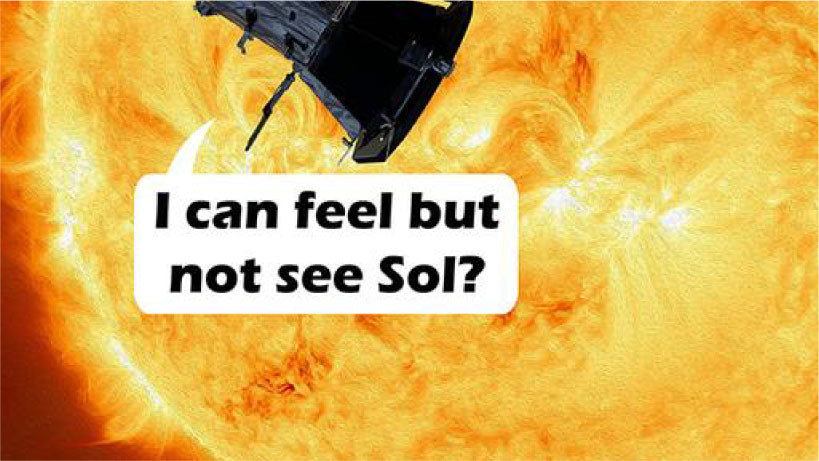
Humans have always seen the sun - Sol - travelling across the sky to sustain life on Earth. Humans have burnt billions of tonnes of buried sunshine – petro-chemicals - to the extent that we now have climate altering quantities of carbon dioxide and other gases in the atmosphere.
In a Cosmic Vertigo podcast astronomers Professor Alan Duffy and Dr Amanda Bauer outline how our sun converts mass equivalent to about 40 million Adult Kangaroos – about Australia’s entire kangaroo population – every second! The podcast is here
Quote: “You can enjoy doing science and help make the world a better place at the same time.”
Jim Allison, Nobel-winning, harmonica-slinging scientist behind one of the biggest modern breakthroughs in cancer treatment.
With NASA’s Solar Dynamics Observatory spacecraft marking its 10th anniversary in 2020 the design refers to three of the recent devices launched or commissioned to study Sol (our sun and nearest star) and build on the SDO’s work. Specifically the design references:
- the joint NASA and European Space Agency (ESA) mission Solar Orbiter mission launched in February 2020 aims to achieve an inclined elliptical orbit above the solar system’s orbital plane so as to observe the sun’s poles, perhaps peering down into deep polar coronal holes or odd geometric shapes akin to Saturn’s hexagonal cloud features. It will also use helioseismological observations to enable a better understanding of the sun’s internal structure.
- Similarly NASA’s Parker Solar probe launched in August 2018 does not use a camera to directly observe the sun. As Mark McCaughrean, senior advisor for science & exploration at ESA says, ““Parker is out there going ‘Ooh, I’m feeling stuff but I’ve got no idea where it came from’.”. Parkers its many instruments allow it to sense the sun’s activities far more precisely than the 1990’s era Ulysses probe.
- Lastly the Daniel K Inouye solar telescope atop the 3,000-metre (10,000ft) summit of the Haleakalā volcano on Hawaii’s island of Maui started taking pictures of the Sun in December 2019. The telescope uses a swimming pool volume of ice each day to prevent its overheating and has already provided the highest resolution images of the solar surface ever taken. Later in 2020 other instruments will enable magnetic fields to be measured much more precisely - these observations could help resolve longstanding questions about the high temperature of the corona compared with the suns surface temperature and better enable us to predict coronal mass ejections that can threaten power grids, GPS and communication networks. (see our
Using these observations together we may be getting closer to understanding the reasons for the sun’s corona being hotter than the sun’s surface.
We recommend reading a wonderful book “15 Million Degrees Journey To The Center Of The Sun” by Professor Lucie Green. One intriguing fact so gleaned was that it takes photons about 200,000 years to get from the center of the sun to its surface before they hurtle off trough the vacuum of space at their more familiar pace of about 300,000 km/sec.
[Also see the related design - Caramel Corn For Sols Scorched Scouts ]
As well as usiing NASA and ESA websites for mission background and information the following podcast and Youtube links might provide some interesting background:
“A New Fundamental Constant For The Sun?” SpaceTime With Stuart Gary 15 Feb 2019
“Solar Orbiter Launch” BBC Inside Science 6 Feb 2020 (Features Professor Richard Harrison from The Rutherford Appleton Laboratory – he has been involved in the missions from the beginning).
“Parker Solar Probe” BBC Inside Science 5 Dec 2019
“Parker Solar Probe Launch and Mission” BBC Inside Science 2 August 2018
“Kiss The Sun – A Summary of The Parker Probe Mission” Dr Karl Kruszelnicki 2 Oct 2018
“Summary of Sol” Cosmic Vertigo with Professor Alan Duffy & Professor Amanda Bauer
“First Hi-Res Photographs of The Sun By the Daniel K Inouye Solar Telescope” Youtube video showing the surface of Sol’s resemblance to caramel corn!
“Daniel K Inouye Telescope and Space Weather” Science Faction on iHeart Radio, 6 Feb 2020

